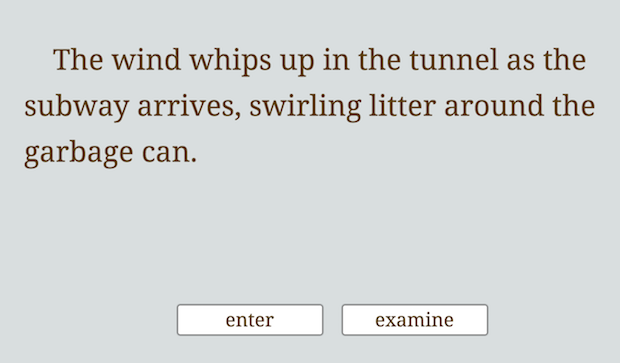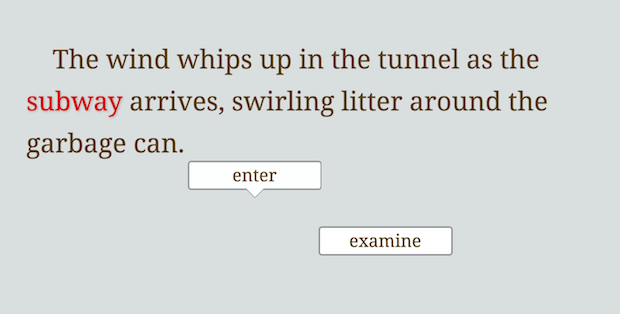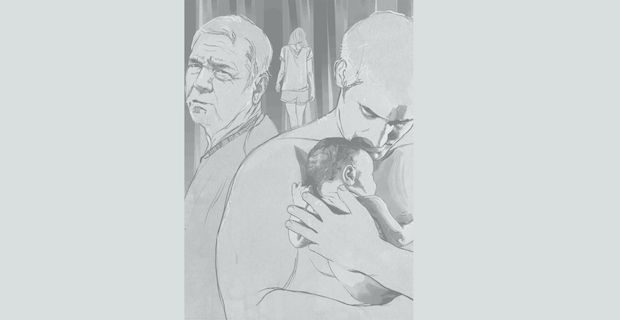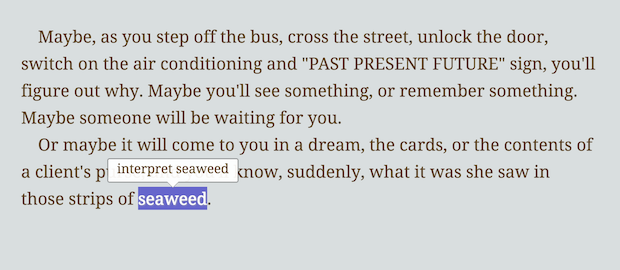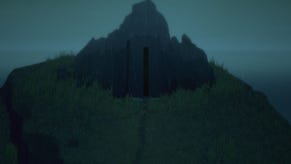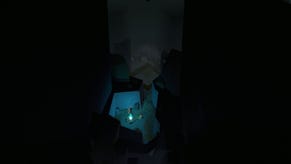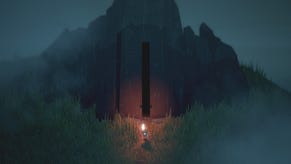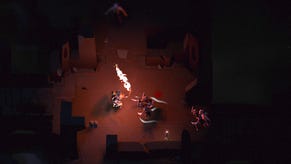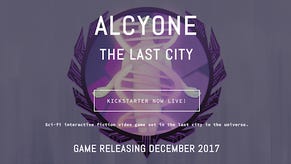IF Only: Stories With Texture
IF engines that aren't Twine or parser-based
Newcomers to interactive fiction tend to distinguish just a couple of IF formats — Twine and parser, often, depending on whether you're clicking or typing. Those with a little more experience might also recognize ChoiceScript and inklewriter, as options for creating games with a classic choose-your-own-adventure-style interface and some of the qualities of a gamebook. But in fact there are many other possible interfaces for IF — and the IF community has just seen the release of a new one.
Texture, designed by Jim Munroe and Juhana Leinonen, is an interactive fiction platform intended to be effective across mobile devices as well as the PC screen — unlike parser designs that require fiddly typing. Despite its simplicity, though, Texture gives the reader a little bit more control than the average hypertext piece: to interact, you drag a verb from the bottom of the screen and release it over a hotspot in the text.
From a play perspective, the experience falls somewhere between a typical hypertext or CYOA experience and a parser game: especially when there are multiple verbs and multiple hot spots available, there's room to form some intention and expectation about what an action will achieve. The presence of an "open" verb at the bottom of the screen might lead us to expect we'll be able to act on doors and locked chests in the page description. A verb like "contemplate" might suggest a more meditative interaction, perhaps directed at important abstract concepts in the story.
Hot spots don't become visible until you've selected a verb to apply, which means it's possible to read the text first without being distracted by links. Once you've started to move the verb, though, your options light up:
Texture can track flag variables, so it's possible to make one piece of the story dependent on another and to have delayed branching where consequences of a choice don't appear until several pages later. The author can also set counters on any given page to limit the player's interactions to a certain number of moves before the verbs disappear and the player sees a link to move on to the next page instead. That lets authors put some resource and pacing constraints on their story. (Twine would support the same functionality, but require considerably more work from the author to implement it.)
There are some important limitations. Once a piece of text has been changed once, Texture doesn't provide much support for changing it a second time — which means that this isn't the right tool for building expanding text like this tea-making scenario from TelescopicText.
Likewise, Texture doesn't currently offer support for general-purpose numerical stats other than the "how many actions have happened on this page?" counter. That means that the modeled worlds underlying a Texture story need to remain quite simple. It also doesn't provide any methods for showing the reader what the current variable state is, unlike ChoiceScript and Undum, which do offer that functionality as a built-in option. And finally, for some of my own explorations with Texture, I've wished I could offer the player the option to reset the current page, essentially undoing that page's existing state so that they could explore some alternate choices instead.
As with Twine, Texture pieces don't always readily reveal just how branched and complex they are under the surface. There are no visible status details or stat-checks, no evident failures, no maps of the narrative possibility space. It's up to the author to let the player know (if they choose) which choice points matter and which don't. That's not necessarily a good thing or a bad thing: sometimes really obvious mechanics get in the way, and sometimes they enable a more effective and enjoyable playthrough. So it's really down to the individual author and project whether Texture's concealment of mechanics is an asset or not.
All things taken together, Texture is a tool with a distinctly different paradigm than most of the others out there, and it's both free and straightforward to start using. Though it provides a "public library" site that will host and publicize your game, it's also possible to download the resulting HTML files and host them yourself on itch.io or elsewhere.
Texture's library launched with three new stories from well-known indie and IF writers: Date Date by Robert Yang (Cobra Club, Hurt Me Plenty), Predictions for a Strip Mall Psychic by Jake Elliott (Kentucky Route Zero), and Jim Munroe's own Pretty Sure.
Of these, Pretty Sure is the largest and branchiest: it tells the story of your relationship to your son, in a science fictional future where human civilization is under alien supervision and control. As in a lot of Munroe's previous work, though, the semi-dystopic future is background for a story that centers on interpersonal concerns. Decisions you make early in the story affect your son's upbringing and personality, and may come back to bite you much later on. Though the events in the story don't change very much from one playthrough to the next, the reader can have a pretty drastic impact on how the characters feel about those events, and how the father-and-son relationship evolves.
Predictions for a Strip Mall Psychic is more constrained, an eerie short story written entirely in the future tense. It's pretty linear, but the player's choices do add flavor and suggest particular concerns.
I especially like the page early in the story where you can choose a "go" verb — a choice to move on, to continue the prediction, to roll the story forward — or a "worry" verb, to linger on and fret about various aspects of your future until you've clarified everything there is to clarify. This takes away the ambiguity one often finds in Twine where it's not clear whether a given link is going to move the story forward or just elaborate on what's already on screen, and it also makes that decision (forward? or stay here and dwell?) into a protagonist choice rather than a readerly choice. The choice to "worry" paints the protagonist, the person receiving all this advice, as fretful, while the choice to "go" paints them as bolder.
Date Date is a vignette that uses Texture's limited-actions-per-page feature: you are out for the evening with a man, and you must discuss three of an available five topics with him. Do you keep it light, or do you delve into controversial subject-matter? And does it ultimately matter which?
Related recommendations, for those interested in other interfaces for interactive fiction:
StoryNexus is no longer supported by Failbetter Games, but the site still offers some worthy and enjoyable story worlds including Chris Gardiner's excellent Anglo-Saxon-flavored dungeon-crawler Below and the post-apocalyptic gunslinger tale Zero Summer (Gordon Levine, Tucker Nelson, and Becca Noe).
Andrew Plotkin's Seltani is a Myst-themed multiplayer hypertext tool where your fellow players can chat with you while you play. Some of the scenarios are things you can play on your own, but for best effect, you'll want to grab a couple of friends to go in with you.
An Earth Turning Slowly by Maeja Stefansson is a stand-alone game that lets you type instructions but then suggests auto-complete options for a hybrid parser-choice experience.
[Disclosures: Emily Short has slept over in Jim Munroe's spare room during a conference, and has met Robert Yang and Andrew Plotkin on several occasions. She has worked with Chris Gardiner when providing freelance services to Failbetter Games. You can find out more about her commercial affiliations at her website.]

